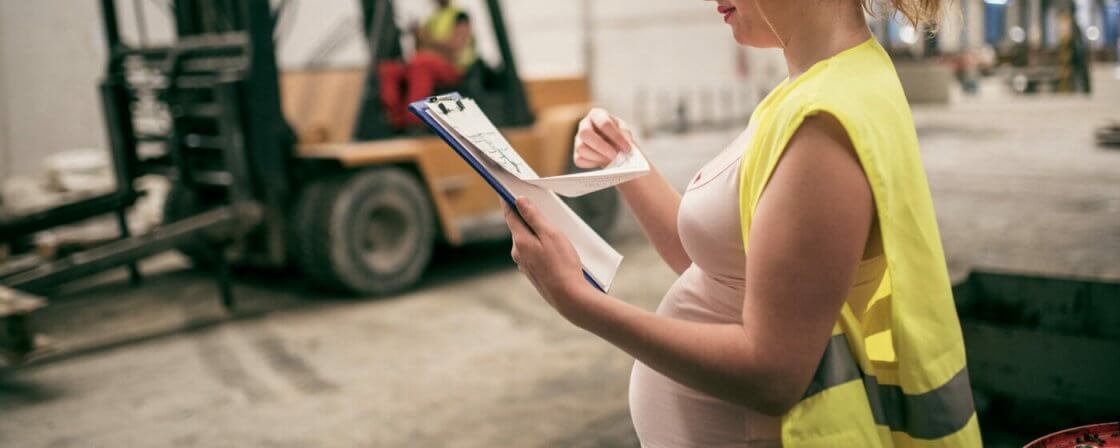Who is entitled to maternity leave?
The mother of the future child is primarily entitled to maternity leave. It is a benefit that is linked to the high stage of pregnancy and childbirth and the period afterwards.
Indeed, only the mother who gave birth to the child is entitled to maternity leave until the end of the six-week period following the birth of the child. After the end of the six-week period, the child’s father or the mother’s husband can also apply. Parents of adopted children are also entitled to maternity leave . In this case, either parent can apply.
Are you solving a similar problem?
Are you dealing with a problem related to your entitlement to maternity leave?
Email us with your query and you will have a response from one of our attorneys within 48 hours.
I want to help you solve your problem
- When you order, you know what you will get and how much it will cost.
- We handle everything online or in person at one of our 6 offices.
- We handle 8 out of 10 requests within 2 working days.
- We have specialists for every field of law.
Maternity leave is one of the sickness insurance benefits. To qualify for it, you must prove that you have been covered by sickness insurance for at least 270 days in the past two years. However, this can be met by different employers. If you were employed under a traditional employment relationship, your employer pays the sickness insurance for you and you do not have to do anything else. The amount of maternity pay is not uniform and depends on the amount of wages.
If you want to take maternity leave after your insurance ends, you will not lose your benefit. This is because the basic protection period applies, which is 180 calendar days from the date of cessation of insurance (leaving employment). If your insurance lasted for a shorter period, the protection period will be equally short (e.g. if your insurance lasted 3 months, the protection period will also be 3 months).
When does maternity leave start?
Maternity leave starts 6 to 8 weeks before the planned date of childbirth. The date of commencement can be determined by the mother herself at any time between eight and six weeks before the birth. If she does not set a date, her maternity leave begins at least six weeks before the expected date of delivery.
Should the child be born prematurely, before the official legal start date, the maternity leave shall start at that moment.
In the case of adoption of a child, maternity leave begins on the day the child is adopted and lasts for 22 weeks, or, in the case of two or more children, for 31 weeks.
When you start maternity leave, the so-called ‘ support period’ begins , during which you are also entitled to financial assistance.
Tip for article
Tip: Both the cooling-off period and the protection period protect employees in very specific situations where they are vulnerable and could easily find themselves without work or resources. How do these two very similar legal concepts differ and to what circumstances can they be applied? This is the focus of our article.
Self-employed and entitlement to maternity allowance
As mentioned above, maternity pay is covered by sickness insurance benefits. However, its payment is not compulsory for self-employed persons. However, any entrepreneur can volunteer to pay sickness insurance.
Entrepreneurial mothers are entitled to maternity pay if they have paid sickness insurance for at least 270 days (nine months) in the two years prior to taking maternity leave, including at least 180 days (six months) in the last year. This length of payment is intended to prevent the expectant mother from paying sick pay on purpose only when she finds out she is pregnant. She may do so, of course, because of concerns about common illness, but even then she will not be entitled to sick pay until three months after the payments have begun.
A female entrepreneur who satisfies the above condition for sick pay payments can draw cash assistance, like an employee, from the eighth week (and no later than the sixth week) before the due date of childbirth. Here too, the entitlement to payment is 28 weeks (or 37 weeks in the case of more than one child).
Tip: From January 2025, the reduction thresholds have been increased by 6.5%. This increase affects the calculation of maternity allowance, and persons with above-average incomes (above CZK 45,000 gross) can expect a higher maternity allowance. The method of applying for maternity allowance has also changed after 1 January 2025. The payment of the benefit is now made in the same way as the insured person’s wages are paid by the employer, similar to eSick leave.
How much is the maternity allowance for self-employed workers?
The payment of sickness insurance also determines how high the maternity allowance will be. Understandably, the more you pay, the higher the maternity pay you get. However, how much sickness insurance premiums the self-employed pay depends on how much they pay in social security.
Fathers and entitlement to maternity pay
The father of the child or the mother’s husbandcan also apply for maternity pay after the end of the six-week period. This happens in situations where, for example, the mother cannot or does not want to give up her career because she is the breadwinner. On the other hand, it may also be the case if the woman has not had a job or has not paid her sickness insurance as a self-employed. For the purposes of the authorities, it is necessary in such cases to conclude a written agreement with the child’s mother that the father will care for the child. The mother’s signature must be officially certified.
Of course, the same conditions apply to the father in terms of sickness insurance, i.e. participation for at least nine months in the last two years, six of which must have been in the last year. Fathers can then take maternity leave from the seventh week after giving birth and are also entitled to a shorter period overall – 22 weeks for one child or 31 weeks for several children.
The application for paternity leave is now processed digitally. All communication between the doctor, the employer and the Czech Social Security Administration (ČSSZ) is done electronically, which simplifies and speeds up the whole process.
Summary
In order to qualify for maternity leave and maternity allowance, it is necessary to have participated in sickness insurance for at least 270 days in the last two years before taking up maternity leave.For self-employed persons, voluntary payment of sickness insurance for a specified period of time is necessary. Maternity leave can be taken 6 to 8 weeks before the planned date of childbirth and lasts for a total of 28 weeks, or 37 weeks in the case of multiple births. If employment is terminated shortly before the birth, a protection period of 180 days applies, during which the right to maternity leave may still arise. The fathers of the child can also take maternity leave if they take over care and meet the legal conditions.




